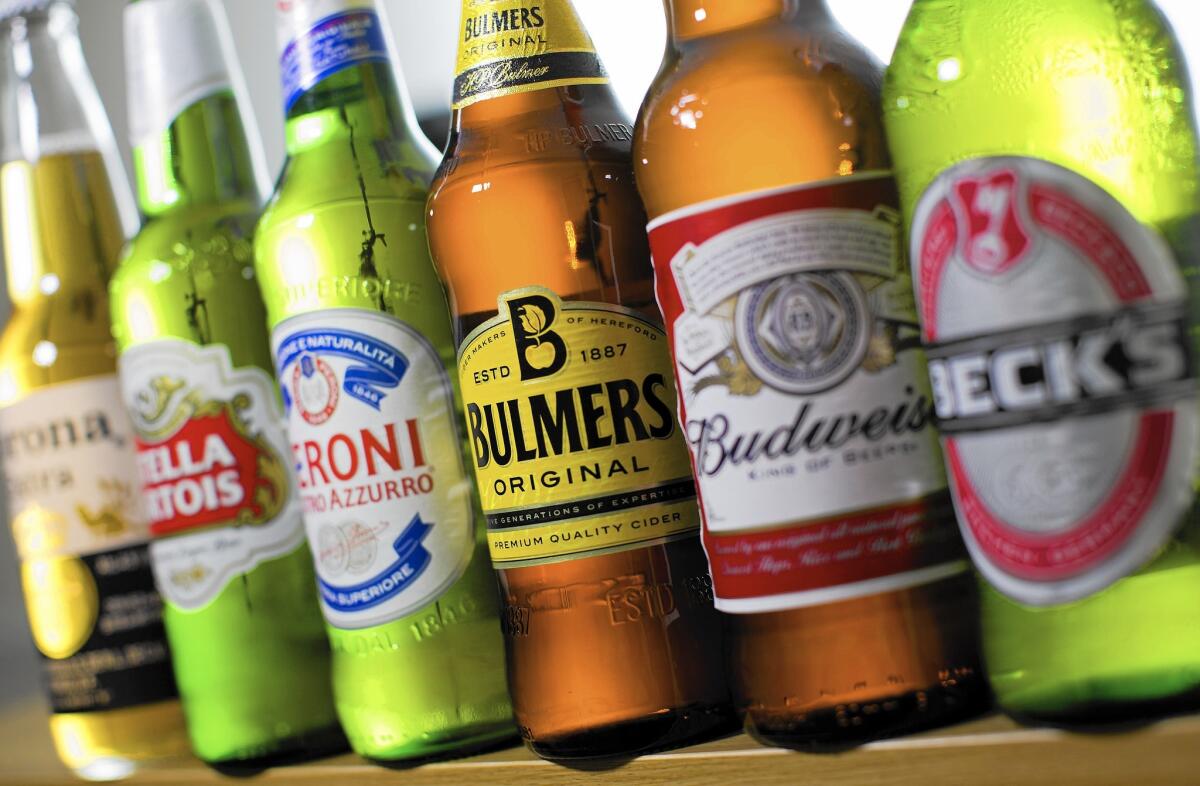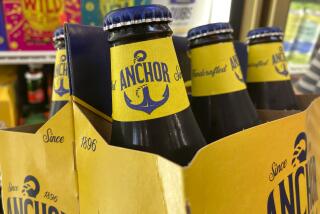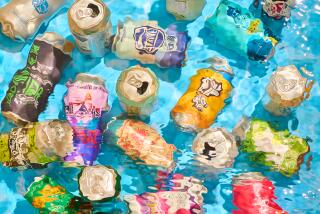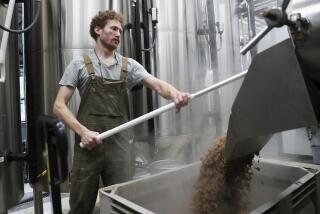Q&A: Brewers’ big taste for mergers

- Share via
Brewers’ big taste for mergers
Another round of mergers is sweeping the beer industry.
Anheuser-Busch InBev this week agreed to buy rival SABMiller in a blockbuster deal valued at $110 billion that would create a behemoth in the global beer market.
Big brewers also have been gobbling up smaller craft brewers to expand their reach. For instance, Anheuser-Busch InBev last month agreed to buy Golden Road Brewing in Los Angeles.
SIGN UP for the free California Inc. business newsletter >>
Tracking all this is Eric Shepard, executive editor of Beer Marketer’s Insights, a leading industry trade publication. We asked Shepard, 60, to size up the market and explain why the mergers are occurring. Here’s an excerpt:
How many Americans drink beer these days?
About 44% of adults drink beer, 32% drink wine and 43% drink spirits. The Beer Institute [an industry trade group] pegged 2014 retail U.S. beer sales at $107.7 billion.
Is that percentage of beer drinkers going up or down?
It varies by year, but it’s almost exactly the same as it was in 1984. What you’ve had is a drop-off in per-capita consumption, the amount of beer each of those drinkers drinks.
How much of a drop-off?
Per-capita consumption was 19.9 gallons in 2014. In 1984, it was 24 gallons. So it’s four gallons per year less.
Why is that?
Over the last 10 years or so beer has lost share to spirits mostly. The reasons are multiple. Some people see it as a pendulum swing where beer becomes more or less popular with different generations. Also, millennials are more promiscuous in their drinking habits than their predecessor generations.
What do you mean by more promiscuous?
When I was growing up most young drinking-age people started with beer and then maybe moved on to spirits or wine. That’s less of a pattern now. Millennials are more likely to mix beverages, even on the same occasion, than older generations. And spirits have become more accessible, more visible, and their marketing has been more effective over the last 10 years.
There also are more things to drink outside of alcoholic beverages, a lot more than 20 or 30 years ago in terms of the soft-drink business and waters and teas and you name it. It’s been an explosion of beverages, and that’s created more competition for beer.
How does beer’s market share look now?
Beer’s share of what we call the absolute alcohol market was just over 50% in 2014. If you go back to the mid-’90s it was closer to 60%. And most of that share loss has gone to spirits.
So if the beer market isn’t growing, that means beer makers have to take market share from each other, right?
Yes. And in the early ‘80s there were only about 50 brewers in the United States. Now you have over 3,000, with the craft-beer explosion.
Which beer makers and importers are the largest in the U.S. market?
Anheuser-Busch InBev was first at 44.7% in 2014, then MillerCoors — the joint venture of SABMiller and Molson Coors — at 26%. Constellation Brands, maker of Corona, is third at 6.7%.
What’s driving all the mergers that are now occurring?
For AB InBev, mergers and acquisitions are part of their DNA: It’s what they do, it’s how they’ve built that business to what it is. It was really a matter of when, not if, they were going to do another deal. And the deal for SABMiller has been in the air for three or four years.
But could one company control 71% of the American market?
No. The Justice Department is not going to let that happen. AB InBev would have to divest the MillerCoors unit. But that merger is not really about the U.S. That deal is more about [gaining share in] Africa, where AB InBev has virtually no presence, and parts of Asia and parts of Europe.
Why are we seeing a rash of craft-beer takeovers?
AB InBev is purchasing craft brewers because they want to compete more in that space. They’ve developed a few of their own brands that compete there. But I think they’re finding, or at least perceiving, that purchasing craft brewers may be an easier way to go about it. But the small craft deals they’ve done have been unable to offset the erosion of the mainstream beers. MillerCoors has basically the same sort of motivation; they just haven’t been quite as active.
What’s in it for the craft brewers?
Some are founders of these companies that want to take money off the table. Some have grown so fast that they’ve been unable to keep up with the growth. The deals also provide some with wider distribution. It is the one growth segment in the industry, and it’s attracted a lot of financial interest.
How much growth?
We have craft beer’s share of the beer market at 9.1% in 2014, double what it was in 2009.
Why are craft brews growing?
You have this “premier-ization” going on with a certain part of the American population. People are turning to what they perceive as higher-quality, more flavorful beers. And being a local brew plays a very strong role in some of the craft growth as opposed to being a global/mainstream, big-company product.
Twitter: @PeltzLATimes
ALSO:
Beer giants AB InBev and SABMiller agree in principle on buyout
How a craft beer from Maine conquered tap lists in Los Angeles
L.A.’s largest craft brewer, Golden Road, tapped in latest beer deal
More to Read
Inside the business of entertainment
The Wide Shot brings you news, analysis and insights on everything from streaming wars to production — and what it all means for the future.
You may occasionally receive promotional content from the Los Angeles Times.











